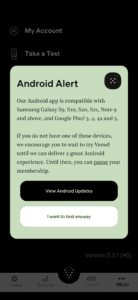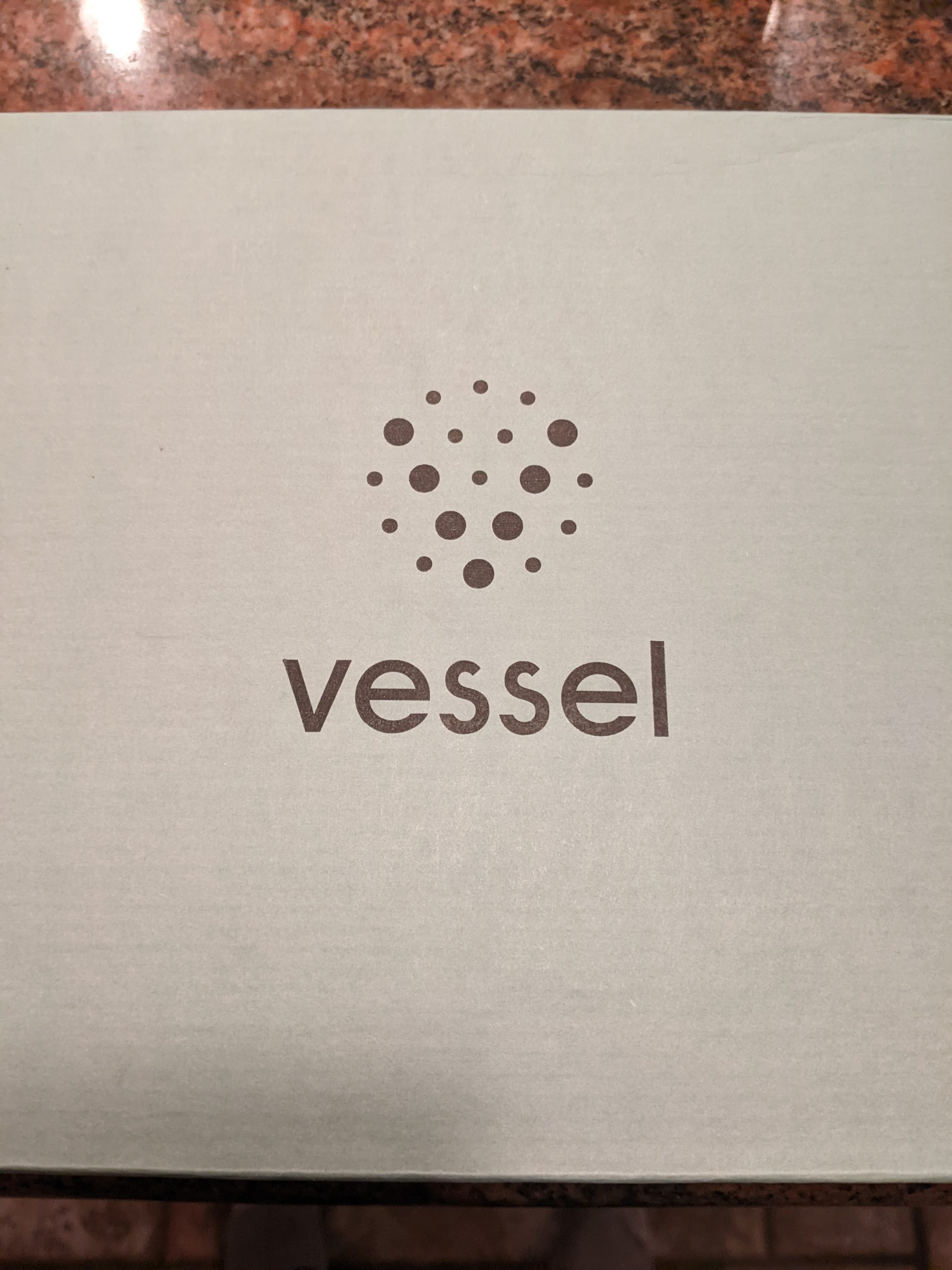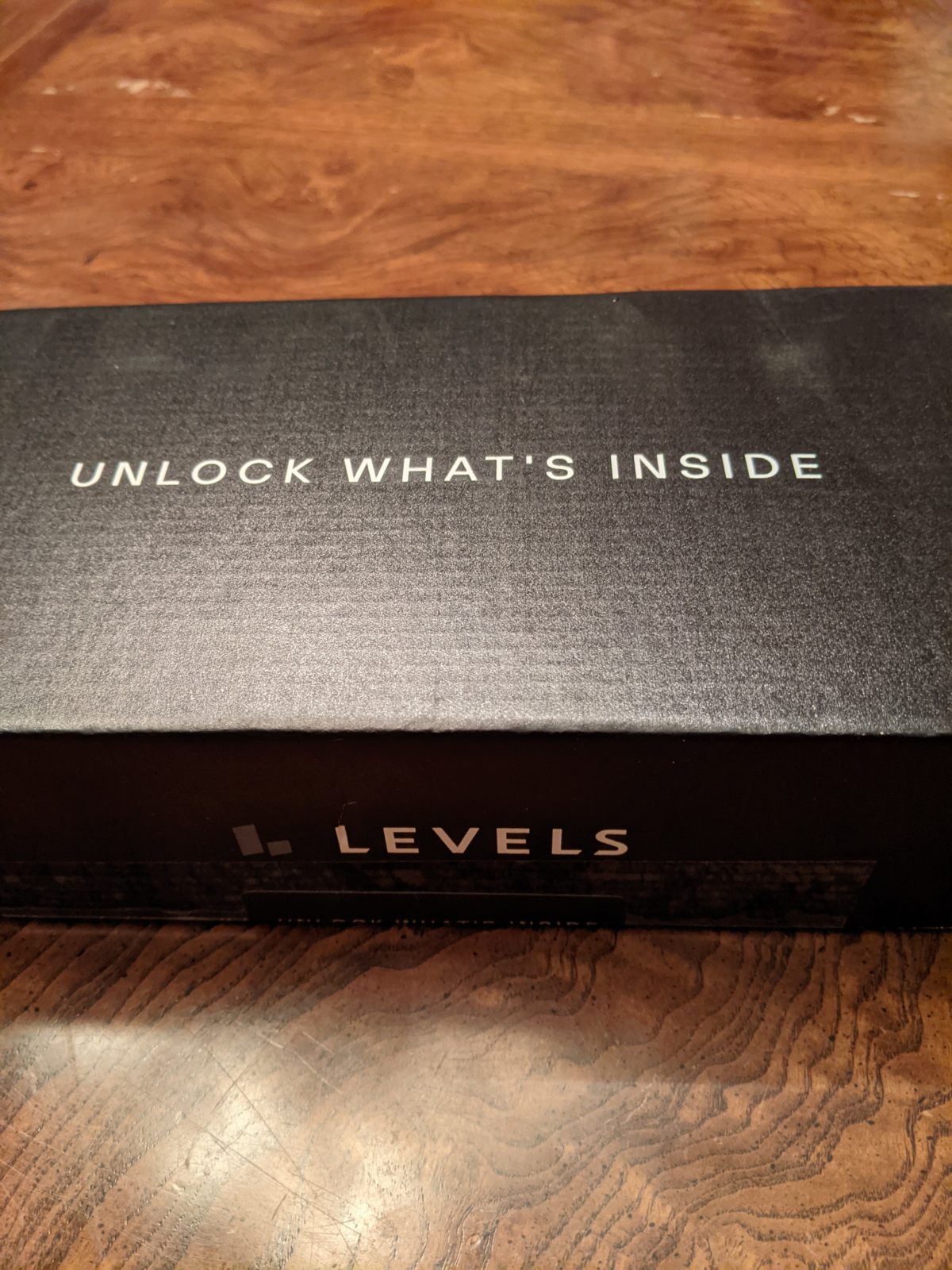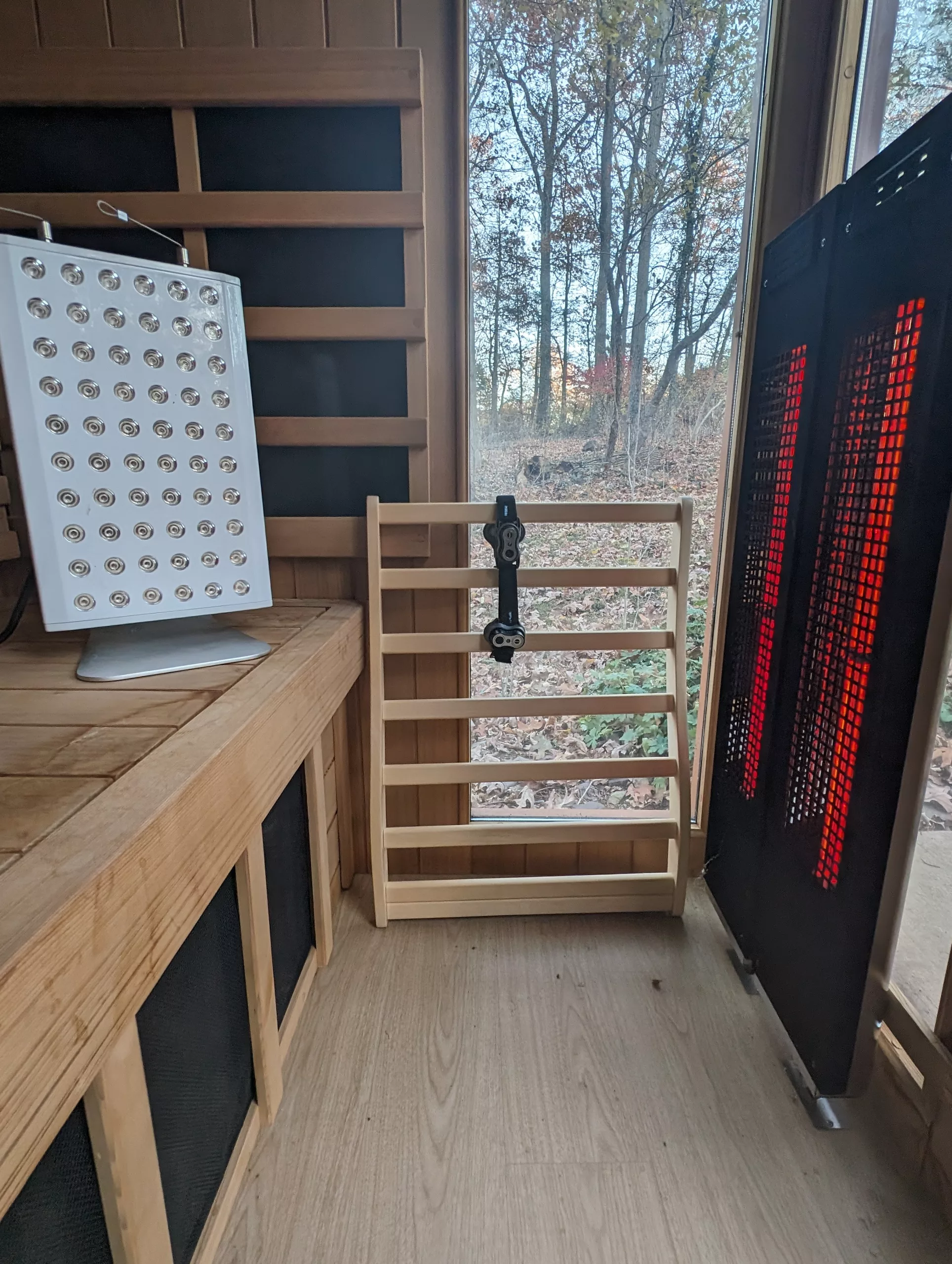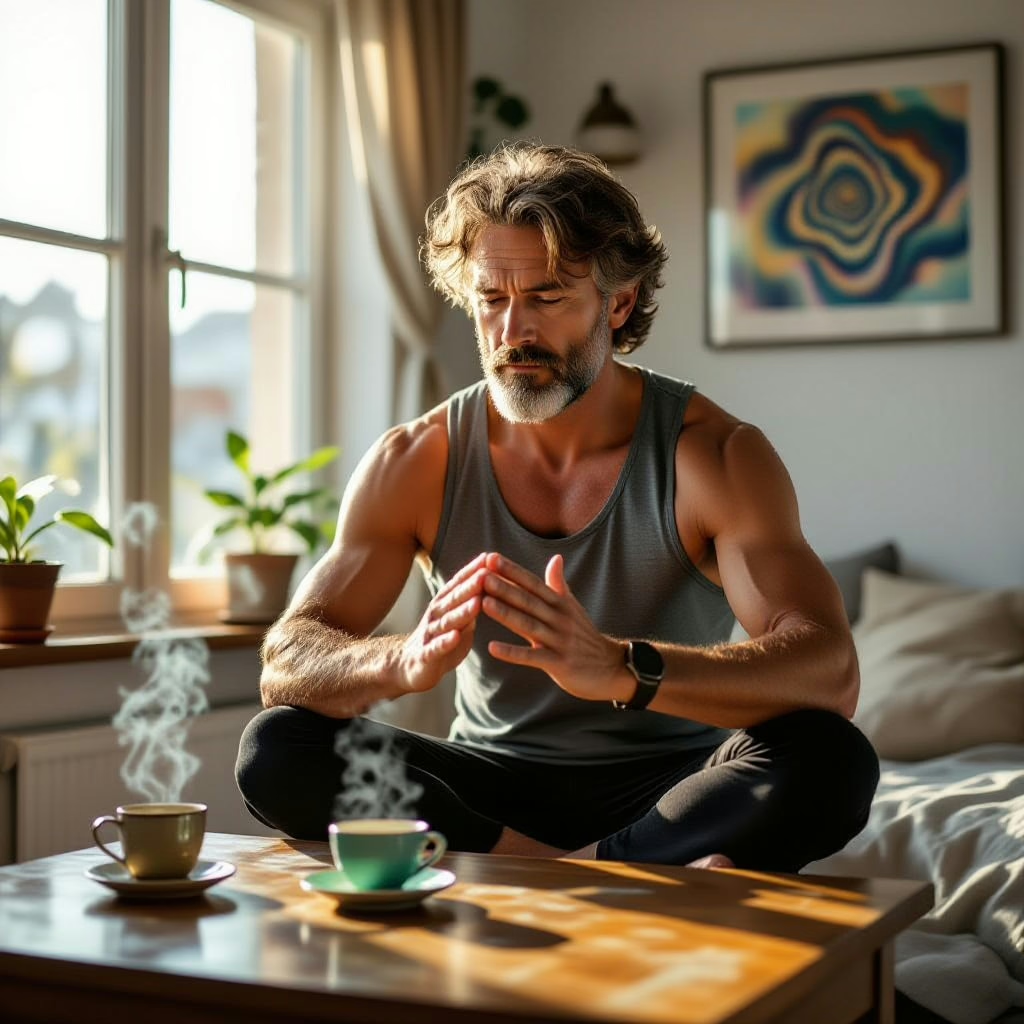The thing I am asked about most often is some variant of “How are you able to do everything that you do?”… It’s usually buttressed by things like: “You have so many interests.”… “You’re married with kids, how do you have the time?” or “Do you ever have down time? I just want to watch Netflix when I get home.” I never really know how to respond to this… it really is just the way I live my life. It has been for a long time. After talking to people a bit about this and enduring constant quizzing, it seems that it might come down to my strict adherence to a daily ritual.
The Daily Ritual
I call this a ‘ritual‘ because it really is something that I’ve built up over decades with an explicit outcome in mind… to live the life that I live. It’s not a routine (a sequence of actions regularly followed; a fixed program.), and it’s not set in stone. I’m constantly iterating on this daily ritual to make it better for me. That’s also part of the key… this is FOR ME… it’s been iterated on for most of my life. It’s been adjusted to fit years of medical tests and customized for what I know about my genetic makeup.
Every part of it has been vetted and tweaked to make it overall positive for my biochemistry. This ‘ritual’ likely won’t work for you. In fact, it will be a horrible thing for many people. Maybe by documenting it, there is something in here that you will find useful. Possibly, you will be inspired to start on the journey of creating you’re own. At least, you will get to see how things change over time because I plan on continuing to update this post as my process evolves.
My Daily Ritual is an Evolution
This is a LONG post. Everything documented here is the current state of my practice. This arose from years of iteration from collecting data about myself in great detail and experimenting with things to improve various aspects of my life. I’m always experimenting and this post WILL NOT document experiments. There were many failures and I don’t discuss those here. This is only for things that have become part of my permanent daily ritual. If you want to know about my latest experiments, ask me about them the next time you see me. At any given time, there’s usually only one thing that I’m experimenting with. This makes it easier to identify positive or negative correlations and eliminate additional variables that could be skewing results regarding my experiment hypothesis.
Before Ritual Comes Analysis
How do I collect and analyze this data? I’ve used tons of things over the years, but at this point it’s essentially custom software that uses the Google Fit platform as central storage. I use several commercial apps and hardware for data collection and everything that I use integrates with Google Fit. This makes for an easy integration point since the additional software that I write just needs to be able to use the Google Fit API to enter or consume data.
For many years, I manually analyzed everything. Over the last few years, with the advancements in Machine Learning, I’ve been slowly building software to help with my analysis. Everything that has become a part of my daily ritual arose out of a desire to make a positive change to some monitored data point that I felt a need to improve. I won’t really dive into the details about specific data points for every single thing in this post. If you’re curious about anything specific, feel free to ask.
The Morning Ritual
I tend to wake up about the same time every day. No alarm necessary as I try to never schedule anything so early that I would need one. I have a skylight in my bedroom. This is useful for slowly nudging me to wake up as the sun comes up. Embracing my own personal Circadian Rhythms has been very beneficial for me.
Getting good quality sleep is also critical to me. Sleep experimentation was probably one of the very first things I played around with in order to increase my productivity. I followed a polyphasic sleep schedule for years, but no longer do that since it’s not really compatible with having a family or a traditional job. It was likely useful in training myself to make the most out of the sleep that I get. This practice taught me how to fall asleep fast, get into a state of REM sleep quickly and spend more time in deep (delta wave) sleep.
The Wake Up
The first thing I do upon waking, is the same thing I do right before going to sleep. I lay in bed for a few minutes mindfully breathing and doing a series of eye movements. The purpose of both of these things is to get the day started right by allowing me to reflect on what I’m going to do and essentially ‘turning on’ my brain. This morning breathing takes on different forms (meant to energize me for the day) unlike my nightly version which always follows the same pattern and purpose (to get me in the right state for sleep).
My sleep quality dictates how the rest of my day progresses. Most of the time, my sleep quality is high, occasionally things go awry and I have ritual adjustments for when this happens. I won’t really go into the specifics of the adjustments since it is a pretty rare occurrence… I do so many things to make sure that my sleep quality is always rock solid. I’ve used many products to monitor sleep quality over the years, but my current choice is by far the best, least intrusive method for me. I use the Oura app to check the details on my sleep quality right after completing my morning breathing routine.
Hydrate
I get out of bed and drink a glass of water to rehydrate. It also helps with getting consistent body related measurements.
I take measurements with a bluetooth smart scale. The one I use measures weight, BMI, and mass for body fat, muscle, and bone. It also tracks percentages for everything including visceral fat. The app has it’s own trend tracking, but I ultimately settled on this model because it integrates with Google Fit.
Get Moving
I get moving soon after this in an effort to get the lymphatic system flowing after sleep. My morning starts with a quick yoga routine. This changes daily and is focused on increasing flexibility. The daily variance is mainly to focus on areas where I may be having issues or feel that I need improvement. The constant here is that there are certain ‘whole body’ flexibility enhancing postures that I do no matter what. In addition to these, the other constant is a mix of moves to sync the two hemispheres of my brain. The basic gist of how this can be done is described as the cross-crawl. Finally, I do a quick rebounding routine that I’m still playing around with.
Turn on Your Red Light
At this point I get in a quick bout of red light therapy. Most days, this is a 10 minute HRV raising meditation using the ‘moments’ feature of the Oura Ring facing the Joovv followed by another 10 minutes that is focused on rehabbing any body part that feels like it could benefit from some photobiomodulation.
I make a giant pot of tea that I sip on throughout the morning. I rotate between green, oolong and pu-erh teas. If I need an extra boost, I’ll make a cup of espresso as well. It’s important for me to get a healthy dose of caffeine early in the morning as I benefit greatly from Ben Greenfield’s Strike-Stroll-Shiver routine. I make sure to drink a few cups before getting a few steps in and then I throw on an ice pack vest for the first 20 minutes of my work day in order to bring on the ‘shiver’.
You might notice that my morning ritual doesn’t include breakfast. I used to be a big advocate of ‘grazing’, but over the last few years I’ve become a complete advocate of pursuing Metabolic Flexibility.
My work day
At this point, my work day begins… I’ll do a quick scan of email and some dashboards that I have to see if there are any immediate fires that need to be put out. Usually there is nothing, but I find it great to get these out of the way ASAP. Notice that I don’t spend any time on non-essential email, social media, political news, etc. That can wait for another time since the mornings are for Getting Things Done (GTD).
Getting Things Done
The rest of my morning consists of complete focus on completing two objectives. One personal objective and one ‘work’ objective. I decide what these are at least a day before I start working on them. They meet the ‘next action‘ criteria from GTD… that means that I know exactly what needs to be done, there is no investigating, there are no unknowns at the time that I decide to work on them. There is just a set of straight forward steps to actually get that objective done that requires some uninterrupted time to do them. Most of the time, these are easy, sometimes they take longer or ‘unknown unknowns’ are discovered.
Deciding What to Work on
I mentioned above that I have at least two main objectives to focus on during the day. Additionally, whatever I do is driven by the following:
- At least once a week, I force myself to come up with one ‘new business’ Objective. This can be a new approach to lead generation, new source of revenue, or a new investment strategy. The time to do this is often spread throughout the week, but at the end of the week, I should always have a new Objective in this class of work that is mostly ready to be worked on. This serves to constantly get me thinking outside of the box with regards to diversifying revenue streams in order to insulate my lifestyle from any unforeseen circumstances that can jeopardize any one existing source of income.
- Any remaining time I spend reading… I currently use Pocket to keep track of anything that I’d like to read that isn’t a physical book or stored in Google Play Books.
If I finish early, I’ll dig into some email at this point (always time boxed) or review other objectives that are ready to be worked on and pick one of those. During this time, I try to remain focused on my task except for one allowable interruption…
The Importance of Movement
Another great feature of the Oura ring is that it will alert you if it feels that you haven’t moved enough over time. I’ve always felt that moving while working was extremely important. This has been reenforced over time with all of the research into Non-Exercise Activity Thermogenesis (NEAT).
I’ve used standing desks for more than a decade. Since standing wasn’t enough, I also purchased a FluidStance. The FluidStance is a balance board that you can stand on at your desk and based on what I’ve seen it is way more effective at increasing your activity/calorie burn than just standing alone. I’ll alternate using it and just standing flat on a mat throughout the day and my Oura ring will never alert me to get moving while doing that.
Occasionally though, I will sit while working and I’ve developed a few quick routines to run through on Oura ring activity alerts that are designed to get my heart rate to ~80 percent of my max for 3 to 5 minutes. A mini trampoline near your desk is a great investment for meeting this need!
Workout
Even though I’m a huge fan of Incidental Activity as the majority of my exercise, I run through a vigorous short but dedicated workout routine.
Most days, I finish the ‘workout’ portion of my day with 20 – 30 minutes in the sauna. I use an infrared sauna and find that it helps both my recovery and sleep scores. If you are interested, I have written about the benefits of my regular sauna use.
The Mid Day Transition
By the time mid day approaches, I’m almost always done with my two major objectives for the day. I mark the transition by taking a few minutes to stimulate my brain differently by learning another language. I use duolingo for this daily practice. You can find and follow me there by searching for my name. I’ll do another quick email checkin and then update/review my GTD lists. The goal here is to get any pending problems front of mind for the next part of my day.
“Lunch”
Now it’s time for my lunch… this is normally around 2PM unless I’m meeting someone for a more traditional lunch time meeting. My rules for what I eat aren’t extremely strict… just a balanced meal that minimizes processed foods and sugars. I tend to keep it low-carb since I like to save my carbs for beer 😀 There is a ritual for how I break my intermittent fast though.
Breaking the Fast
I break my fast by drinking an Apple Cider Vinegar (ACV) cocktail. This is simply one tablespoon of ACV (with the mother) in a full glass of water, with a pinch of sea salt and cinnamon (sometimes I had a touch of lemon juice or an electrolyte powder instead of the salt). I do this for several reasons, but it started for the same reason I started TRF… I have a history of diabetes in my family and both of these practices have been shown to minimize insulin spikes and resistance. Further research and analysis has also shown evidence supporting an increase in gut health leading to enhancements in nutrient extraction for the food I’m about to eat.
Additionally, ACV has been shown to support an alkalizing effect on the body. This prevents leaching of calcium from your bones, has been shown to support your immune system and is generally beneficial for many endogenous processes within your body. The morning breathing techniques that I use are also designed to maximize this alkalizing effect.
After consuming this drink, I’ll eat a handful of algae tablets. Good fiber, high in magnesium (more about this later) and generally starts to make me feel full and helps prevent over eating empty calories during my ‘feeding window’.
Supplements
I’ll then wash down my morning supplements with another glass of water. I’m always experimenting with new things based on the data that I’m tracking and areas that I want to improve, but the current required items include (not all at the same time, or consistently every day):
- multi mushroom blend ~150 mg of each (Currently using Host Defense – Stamets 7 Multi Mushroom Capsules and a custom blend)
- custom NAD+ boosting capsule
- 1000 mg fermented chlorella
- 2500 mg Micronized Creatine Monohydrate
- 1000 mg Curcumin
- 3000 IUs Vitamin D3
- 1.2g of Omega 3s
- 80 mg Hyaluronic Acid
- 300 mg Nicotinamide Riboside Chloride
- 200 mg Tongkat Ali
- 420 mg Phosphatidyl Choline
- 1 g Berberine HCl
- 300 mg Alpha-Lipoic Acid
- 3 mcg Boron
- 20 g of Collagen Protein Powder
- 20 g of other protein (either grass-fed whey, pea, hemp or straight EAAs… I change daily based on my workout/diet plans for the day)
The main goal here is to increase blood flow, enhance my immune system, reduce inflammation, build/maintain lean muscle and stimulate the production of BDNF. Shameless self promotion… you can purchase high quality versions of many of these supplements at a discount at BulkSupplements.
Fat
The only other daily thing here is adding some high C8 Capryilic Acid Content MCT oil to my meal. This can be mixed into just about anything, and makes a decent salad/sandwich dressing just by itself. This is done again to decrease blood glucose levels and has the nice side affect of increasing blood ketone levels which gives me a mental boost for the afternoon. I’ll go through some of my less pressing emails while eating lunch and prep for making the remainder of the day productive.
Walk
Another basic thing that I’ve been doing for a very long time is a ‘lunch time’ walk. This started out mostly as a way to get some movement during the day and to get outside of the office on nice days. These are great reasons, but I’ve evolved this into an informal mindful walking practice. I get outside no matter the weather and walk for at least 20 minutes. I’ve built an infinite labyrinth trail at my house that I walk for this purpose. I focus on the changes that occur to the trail day by day and let my subconscious churn on problems and the upfront items from my GTD list that I’ve recently reviewed. Some of my best ideas arise out of this practice or immediately after… plus I get another 20 minutes of exercise in during the day!
Time to Learn
Afternoon is all about learning and idea generation… most of the time I focus on getting more items in my GTD lists to the ‘next action’ state. This might involve investigating alternative approaches, digging into unknowns, but often requires learning something new.
5 Hour Rule
I started a basic practice that became my afternoon routine after reading about the 5 hour rule. I’m pretty sure I first heard about this through an interview with Warren Buffett. I did start out struggling to find my 5 hours a week to do this, but with practice and dedication, it eventually became the more like ’25 hour rule’ that it is for me now. This approach to learning, coupled with GTD, has really allowed me to supercharge my productivity over the years.
During this time, I still pay attention to my activity levels the same way that I do during the morning and follow a similar routine for increasing my activity levels. The number one underlying goal for this time is to…
Prep for tomorrow
I never want to wake up questioning what is most important for me to do in the morning. It’s a waste of time when I’m in the best state for working on the real tough problems. This uncertainty often leads to poor sleep since I’ll ruminate on all of the things that I could possibly work on trying to weigh the pros and cons of each.
Identify ‘Next Actions’
Because of this, I want to end my work day by figuring this out. I review all the objectives that I have that are high priority items and pick the ‘next action’ tasks that have the highest ROI for at least one personal and one work related item. Barring any emergency that occurs over night, these will be the things that I focus on most in the morning. This eliminates any procrastination-related churn in my mornings and sets me up for a good night’s sleep with a defined set of items for my subconscious to ruminate on.
Pre-Dinner Prep
I’ll do a some quick body weight exercises to lower insulin-like growth factor a few minutes before eating dinner. Dinner, like lunch, is balanced from a macro-nutrient perspective, minimizes processed foods, but otherwise anything is game.
After Dinner
After eating dinner, I’ll usually take another short walk, but my ritual is much more fluid. This is time for friends and family. Hanging out, conversation and fun. There’s no real focus on working out since I’ve almost always met my goals during the day. I’m not thinking about tomorrow because I’ve already figured out exactly what I’m going to do (and I’m confident that it’s something that I can get done).
Feeding Window Finish Line
The only real thing that I do at this point is pay attention to the finish line of my feeding window. As this time approaches, I’ll take another few grams of glycine to drop my body temperature and encourage good sleep. If I feel any indication that good quality sleep may be a problem, (e.g. muscle soreness from working out, anything else weighing on my mind) I’ll take some CBD oil and eat two tablespoons of raw almond butter. This is a magnesium bomb, and done at the right time, increases Gamma-Aminobutyric Acid (GABA). GABA is effective at promoting relaxation (i.e. better sleep) and the magnesium also promotes muscle recovery.
Minimize Blue Light
Sometimes work bleeds over into the evening. When that does occur, I want to do everything to minimize any detrimental impact to my sleep quality. I use wellness settings on all of my electronic devices to minimize interruptions, dim brightness and alter color hues after a certain time. If I spend any time in front of a screen, I use blue light blocking glasses. I go to bed when I’m ready to sleep. I do my bedtime breathing exercise and start the whole process again when I wake up.
Conclusion
So there it is… the daily ritual post. I’ll update it as things evolve. I’m more than happy to answer any questions about why I do things the way that I do. I held off on going into the many reasons why things have evolved the way that they have to keep this readable. Believe me, there is a method behind all of my madness. I’m more than happy to discuss it if you really want to hear it! I could write just as much about why I DON’T do certain things or the experimentation involved in arriving at my conclusions. If you’re curious about either of those things inquire as well. Most importantly, if you decide to go down this path for yourself, I’d love to talk through your process and share some of the things that I’ve found.

